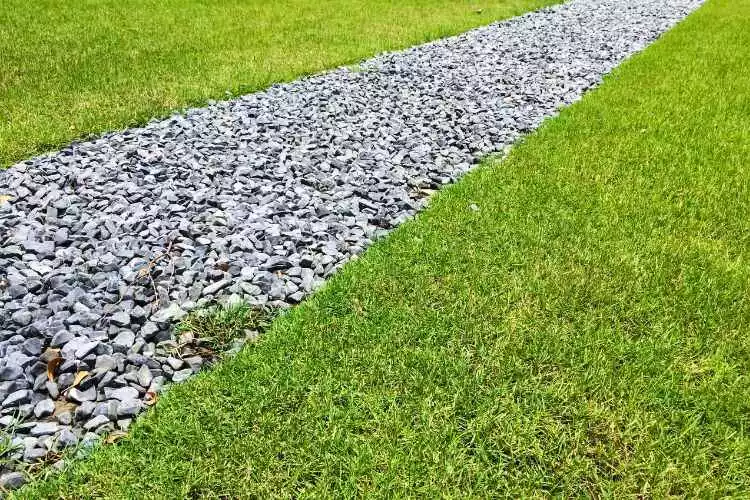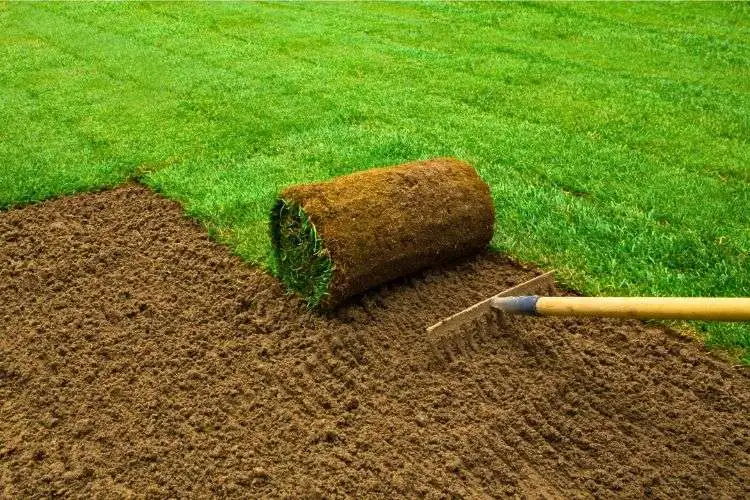When considering the installation of a new lawn, homeowners often wonder if it’s possible to lay sod over gravel. This simplified guide explores the factors impacting such a decision, the potential challenges, and alternative solutions. Follow along as we dig into this important question and provide essential information for making an informed decision. Let’s find out can you lay sod over gravel?

Can you lay sod over gravel?
Technically speaking, it is possible to lay sod over gravel, but it’s not recommended due to potential issues. Sod requires nutrient-rich soil to take root and thrive. Laying sod over gravel deprives the grass roots of the nutrients it needs from the soil, which can lead to poor growth, browning, or premature death of the grass.
Compaction, drainage, and aeration are a few added challenges when laying sod over gravel. The gravel limits the space for the roots to spread and grow, reducing their ability to absorb water and nutrients. Also, gravel underneath can create excessive drainage causing the sod to dry out faster.
Instead, consider removing the gravel layer or adding topsoil above the gravel before laying sod. This provides the grass roots with necessary soil conditions, promoting their health and longevity. Always consult with a landscaping professional before making such decisions.
What is the best material to put under sod?
The best material to put under sod is a well-prepared layer of nutrient-rich topsoil. To ensure that your newly installed sod takes root and thrives, follow these steps in preparing the ideal base:
- Soil Test: Before laying sod, conduct a soil test to determine the pH levels and nutrient content. This helps identify deficiencies that need to be addressed for optimal grass growth.
- Remove Debris: Clear the area of rocks, roots, and debris that could hinder the grass roots’ growth and penetration.
- Loosen Subsoil: Use a rototiller or garden fork to loosen and aerate compacted subsoil, ideally to a depth of 4-6 inches. This step improves drainage and aeration, allowing grass roots to grow deeper and healthier.
- Level The Ground: Ensure the ground is even and graded to prevent water pooling and promote proper drainage. This also eliminates any bumps or depressions affecting the sod’s uniformity.
- Topsoil: Depending on the soil quality, add a layer of nutrient-rich topsoil, ideally 4-6 inches deep. This topsoil provides the ideal environment for grass roots to anchor, grow, and access necessary nutrients. Blend the topsoil with the loosened subsoil using a rake.
- Fertilize: Apply a starter fertilizer rich in phosphorus to promote strong root development. Follow manufacturer recommendations for optimal application rates.
- Lightly Compact: Use a lawn roller or tamp the soil lightly to create a firm and even surface. This will ensure the sod makes proper contact with the soil beneath.
- Water: Moisten the soil before laying sod to provide an optimum environment for root establishment. Be careful not to oversaturate the area as this can lead to poor sod-to-soil contact.
When the above steps are followed, the prepared topsoil provides the best material to put under sod, setting your new lawn up for success and long-term health.
How much topsoil over gravel to grow grass?
A substantial layer of topsoil is required to effectively grow grass over a gravel layer. You can use a minimum of 4 inches of topsoil and start growing grass from seed, but keep in mind, during the summer heat, it will dry out quickly, leading to dormant grass.
Therefore, a minimum depth of 6 inches of topsoil is recommended for a greater chance of success. Ideally, 8 inches should be used for an easier lawn transition.

Topsoil depth is crucial as most grasses grow their roots in the top 6 to 12 inches of soil 2. It would be beneficial to till some topsoil into the gravel before adding the main topsoil layer. This approach can help mitigate any issues related to root depth.
However, if your gravel layer is significantly thick, like an old gravel driveway, you may need a considerable amount of topsoil, closer to 12 inches, to establish a healthy turf.
In sum, the required depth of topsoil depends on the type of grass and the characteristics of the gravel base, but a general rule of thumb is to aim for 6-8 inches as a minimum. Always remember to consult with a landscaping professional for advice tailored to your specific lawn conditions.
Related article about sod you may find useful: Sod Is Turning Brown: Reason and Solution
Conclusion:
laying sod over gravel is technically possible but not recommended due to the potential problems it poses for grass health and growth. Instead, investing time and effort in preparing an optimal foundation of nutrient-rich topsoil is crucial to ensure successful sod establishment.
By carefully considering the soil quality and depth, homeowners can achieve a lush, healthy lawn that is beautiful and long-lasting. Always consult a landscaping professional for personalized guidance when determining the best approach for your lawn’s needs and conditions.


